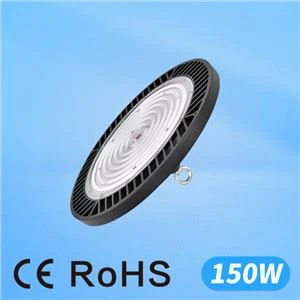High bay is one of the common types of indoor lighting fixture. They are designed for high ceiling up to 6 to 20 meters. In the warehouse or storage unit containing flammable goods or ignitable fibers, explosion proof lighting is required. The LED inside explosion proof high bay has higher luminous efficacy, so the lights have a lower power input. Also, due to the unique LED packaging, they do not produce spark when we turn on or using the lights. It makes our LED product intrinsically safe.
In the past, using halogen or metal halide lights in such the hazardous locations is extremely dangerous because the instant high temperature (2000 to 3000°C) will produce at the filament when switching on the high power bulbs. The spark will ignite the combustible particles or gas in the explosive atmosphere. Nevertheless, LED solves this issue by using a totally different working mechanism – using the current to pass through the semiconductor to generate visible lights, instead of heat. The junction temperature of the lighting fixture can be reduced dramatically and thus it is safer in explosive environment. The heat accumulation of high bay lights also damages the chips, so we have a patented heat sink design that channelize the heat away that keep the lamp cool.
Depending on the mounting height and size of the indoor explosive environment, our engineers will design the best lighting solution for your project. We have LED lighting from 50, 100, 200, 400 watt, and even up to 1,000 to 10,000 watts!
Class & Division of Explosion Proof Lighting Requirement
According to Occupational Safety and Health Administration, there are several classifications for hazardous locations. Customized lighting should be applied in different explosive environment.
1. Class 1 vs Class 2 Explosion Proof Lighting
Class 1 & 2 are the most common classification of dangerous areas. The Class 1 describes the locations that there is combustible gaseous mixture in the air. The concentration is enough to trigger an explosion if there is ignition. On the contrary, class 2 areas mean there is flammable, dust or powder. So, we can see the major difference between class 1 and 2 location is that the state of flammable substance. Class 1 is gas or volatile mixture, while class 2 is pulverized particles. Therefore, we can see blowup is more likely to occur in class 1 than class 2 as the gaseous substance can be spread in the air easily. The explosion proof requirement of lighting would be more rigorous for class 1 location.
The examples of class 1 locations include LPG processing plant, gasoline plant, pipeline station, refinery facilities, paint booth, etc.
The example of class 2 environment includes coal mine, firework factory, food processing plant (flour, sugar, starch storage), etc.
2. What is Class 1 Division 1?
Class 1 Div 1 location describes an area that the combustible gaseous vapor might appear if the machine work under normal or abnormal conditions.
3. What is Class 1 Division 2?
Class 1 Div 2 means the inflammable gas or vapor will be stayed inside a close system, but those explosive substance may leak outside the contained if there is failure of the closed system.
4. Class 1 Div 1 vs Div 2 Lighting
You may ask what is the difference between class 1 div 1 and div 2 location lighting? From the above definition, we need to expect that the explosive substance exists in the class 1 div 1 area all the time. The chance of explosion is relatively high. While for class 2 div 2, the flammable mixture might be confined to a close system; however, leakage might also occur if there is malfunction of the close system. Although the lighting in both div 1 and div 2 locations should be intrinsically safe, the div 1 lighting should have higher explosion proof standard.
5. What is Class 2 Division 1 Environment?
Unlike class 1, class 2 div 1 describes the air contains inflammable dust or powder in normal or abnormal working environment.
6. What is Class 2 Division 2?
The div 2 location is relatively “safer”, which it is not expected to find the inflammable dust in the air, unless there is malfunction of the equipment. However, we should also prepare for the lighting that is explosion proof in these areas, because the combustible dust exists in the work place.
7. Class 2 Div 1 vs Div 2 Lighting
Which is the most dangerous among class 1/2 & div 1/2? To compare these 4 classifications, the ease of explosion follows this order: Class 1 Division 1 > Class 1 Division 2 > Class 2 Division 1 > Class 2 Division 2.






